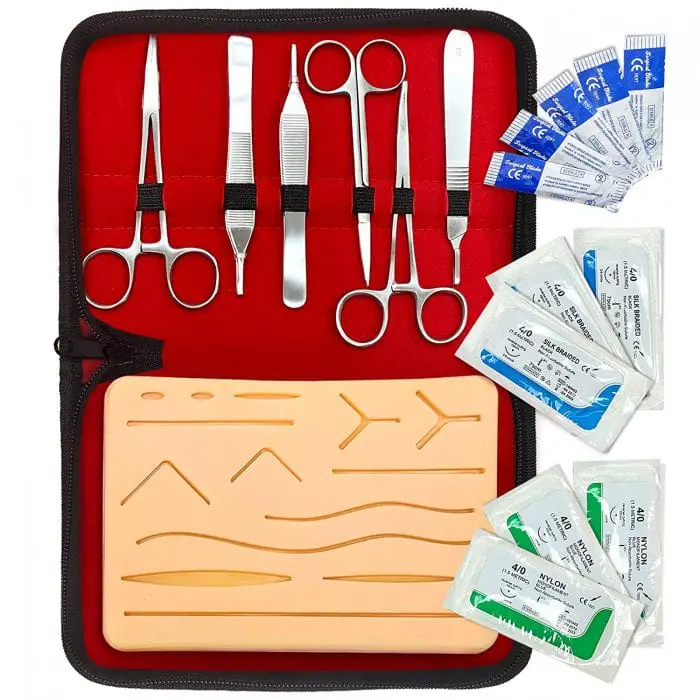As technology has developed, our lives have become farther removed from nature.
Technology has become a crutch in our everyday lives with finding our way, staying warm, finding shelter, and getting the food and water our bodies need.
Relearning these skills is essential for anyone interested in spending time outdoors as any situation can become a survival situation and having these skills can save your life.
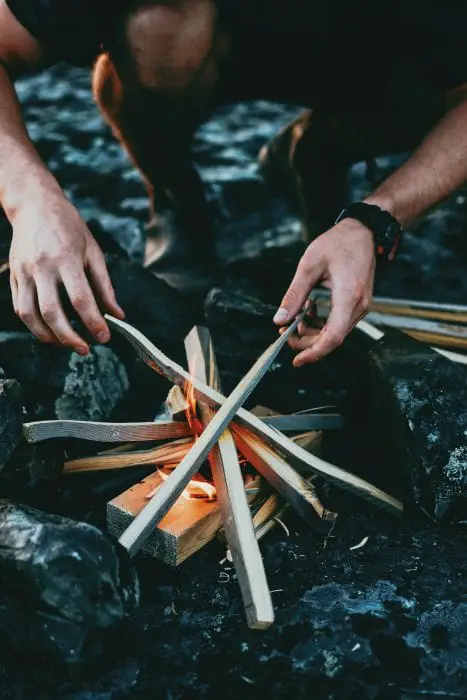
| Quick Navigation Navigation Fire Shelter Water and Food Staying Warm Making Rope Create a Blade Harvesting Natural Medicine Survive at Night Cook Over a Fire Deal With Your Waste First Aid |
The specific skills needed to survive in every climate and situation vary greatly, the skills you need in the Pacific Northwest are different than those needed for the Arizona desert.
These skills can be broken down into a few basic categories: navigation, temperature regulation (how to stay warm in this article), shelter, and food and water.
1) Navigation

Navigation is one of the most important survival skills. Being able to find your way and keep a bearing you can significantly increase your chances of survival.
The most basic element of navigation is paying attention to your surroundings where there are all sorts of natural clues to tell the direction from. The most basic one is the path of the sun. It rises in the East, reaches its zenith in the South (if you’re in the Northern hemisphere), and sets in the West. This is great unless you can’t see the sun.
If you can’t see the sun, look to tree limbs. Tree limbs grow to catch as much direct sunlight as possible; since the sun spends most of the day in the southern part of the sky tree limbs will point that direction usually.
Trees will have a fuller leaf cover on their southern half, there will usually be more limbs on the southern half and they will grow horizontally, facing north you will find fewer limbs and they will grow more vertically in their attempt to catch more sunlight.

Navigating at night, although it should generally be avoided, can also be done by observing nature. Instead of relying on the sun, we’ll be relying on the stars. Stars do not share the same path as the sun, they appear to rotate around the north star and we can use that to navigate.
Lay down with a stick and line it up with a star as if you’re aiming a rifle. Over time the stars will move. If the star moves in these directions it means you’re facing the respective cardinal direction:
| Star’s Rotation | Your Direction |
| Left | North |
| Up | East |
| Right | South |
| Down | West |
An acronym to help you remember this technique is L.U.R.D.
2) Fire
Being able to stay warm is an essential survival skill. Hypothermia can set in unnoticed and quickly take a situation from bad to critical. So, what are you actually trying to do when you’re trying to keep warm?
You’re trying to keep the air around your body warm, so your body doesn’t lose as much heat. This can be done by using fire to give off heat or using shelter and clothing to preserve heat.
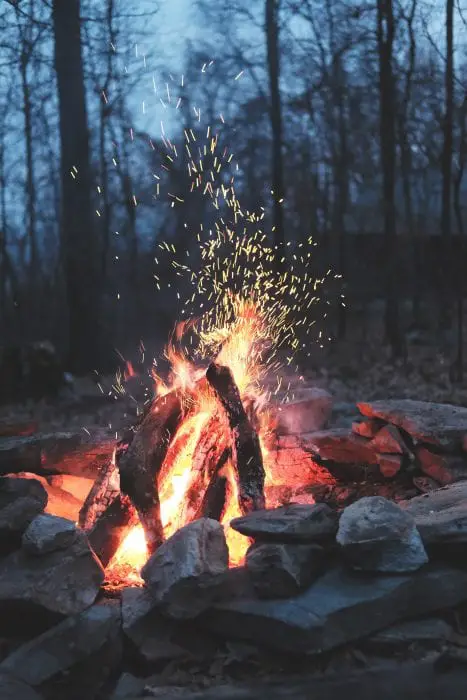
Making a fire is a combination of art and science. Everyone has a preferred way to start a fire and keep one going.
No matter the method you prefer, building a heat reflector will increase the heat you get off your fire. It’s a basic idea: build a wall around the fire to redirect heat instead of letting it dissipate in all directions.
Making a reflector wall:
- Drive stakes into the ground, make sure to drive them so they’re leaning back.
- Stack branches against these to a desired height.
- Repeat for as many walls as needed to capture and reflect the heat.
3) Shelter

What type of shelter you can and should build depends on where you are, how long you will be there, and what resources you have. Despite this there is one basic design that you can pretty much adapt to any region.
How to make a tripod shelter:
- Make a tripod using three sturdy branches. One should be significantly longer than the others, long enough for you to lay down under the tripod.
- Lean branches along the length of the long support.
- Cover using whatever you have. Grasses, leaves, a tarp or plastic will all work.
This basic design can help keep your warm and fairly dry in many regions and seasons. A trick to help stay dry in case of rain is to dig trenches around your shelter. Dig on the uphill side around your shelter on both sides. This will help divert some rain or groundwater around your shelter.
4) Water and Food
Finding reliable food and water is a skill that people relied on daily for survival that has since been forgotten. Iodine and water filters are great as long as you have access to them. Thankfully there’s an easy way to filter water that has been used for centuries, even by the U.S Calvary as it moved west across the plains. I recommend having three containers (three buckets will work) and something to strain through (fabric, coffee filter, netting, etc.).
How to:
- Fill one container with unfiltered water (this will be the only container that unfiltered water comes in contact with to prevent contamination).
- Cut the bottom off on of the bottles. Wrap the strainer around the top, then pour in charcoal, then sand, then gravel into the bottom. This is the most common order. Depending on the size of the bottle and what you have on hand you can alternate levels of gravel and sand.
- Pour water through the straining bottle into the clean bottle.
All of these things can be readily found or made in most survival settings.
With just water, flour and salt you can make hardtack. Thanks to its long shelf life hardtack has been a staple for soldiers, sailors, pioneers and anyone else who’s undertaken a long voyage for generations. Here’s the recipe:
- 3 cups of flour
- 1 cup of water
- A little bit of salt
Mix and bake at 375* for 30 minutes. It’s that simple. You can add sugar, milk, peanut butter powder or other ingredients for flavor but they will shorten the shelf life.
5) Staying Warm
Ideally, you’ll want to build yourself a shelter or fire to keep warm in the cold or at night. What do you do if your wood is wet, or you’re stranded where there isn’t anything to build a shelter?
The nights still get cold, and so do the days if you’re out there during the fall or winter months. What can you do to keep warm if all you’ve got is the light jacket and jeans you were stranded in?
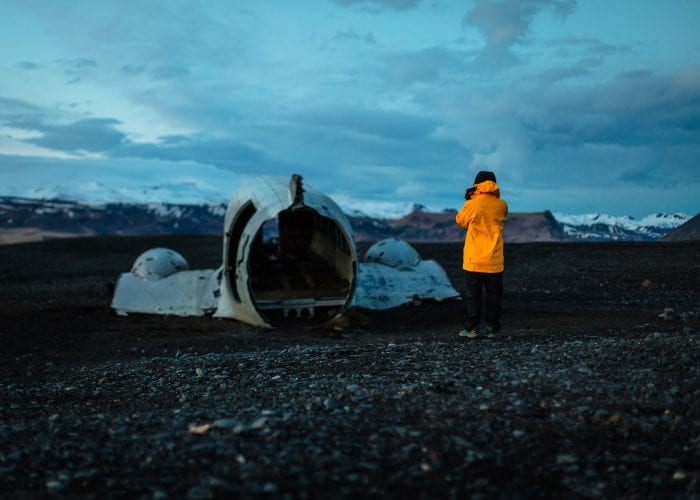
The best thing you can do is to create an air gap between your skin and your clothes. Stuff as much material as you can — leaves, grass, whatever you can find — into your clothing to create a gap where air can gather to keep you warm. If you’ve got more than one layer, you can also put the material between them.
This isn’t a foolproof method for staying warm, but if you don’t have the tools or ability to build a shelter or fire, it could mean the difference between surviving and freezing. Make sure that whatever you’re stuffing into your clothes isn’t poison ivy.
6) Making Rope
In a survival situation, a rope is good for everything from tying your shelter together to creating a snare for catching your dinner. If you don’t have one handy, one skill you should learn is how to make natural rope out of plant material.
First, find a good fiber-based plant such as dogbane, milkweed or even hemp. You can also use animal fur, or even plastic bags if you’re stranded somewhere that’s got plenty of litter.
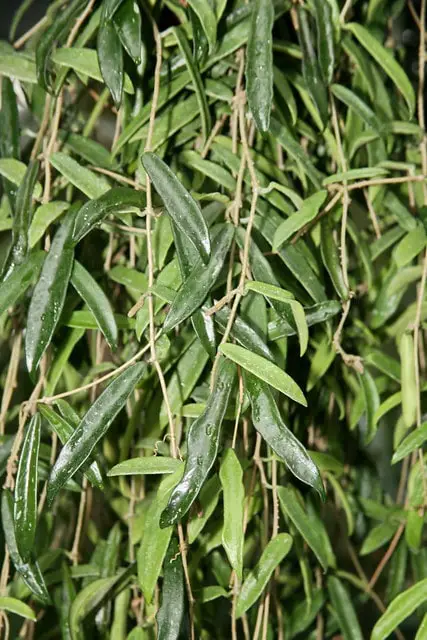
Once you have plenty of strands, you can weave them into a strong rope that will serve your needs. The more strands you braid or twist together, the stronger your finished product will be. With enough stands, you can take something that seems weak by itself, like a plastic grocery bag, and turn it into something that will support your weight.
7) Create a Blade
Hopefully, you’ll at least have a pocket knife on you in a survival situation, but if you don’t, you’re not in trouble. If you can find flint, obsidian or other similar stones, you can create a stone-age knife that will help you survive.
Flintknapping is an ancient skill that can take years to perfect, but if you’re stranded in the wilderness, take a page from early paleolithic cultures — just bash on your rock with another until something useful flakes off.

These stones are strong but they break along hidden fissures, creating razor-sharp edges. Until humanity discovered copper and other soft metals they could cold-forge, they used stone tools made from flint and other similar stones to build civilization.
You don’t need to be an expert flintknapper to make a knife or ax-head from stone. It won’t be as smooth or as sharp as a modern steel blade, but in a pinch, it can keep you alive.
Once you have an ax head or knife blade, you can bind them into a stick with that rope you made in step two. Then you’ll have a weapon you can use to hunt with or defend yourself.
8) Harvesting Natural Medicine
If you don’t have a first-aid kit in your pocket, getting wounded or sick in the wilderness could be a death sentence.
Thankfully, the human race survived for thousands of years before the invention of antibiotics by relying on natural medicines, and you can do the same in a survival situation.

Willow bark, for example, contains salicylic acid — the same pain-relieving chemical found in aspirin. Honey, if you can get it safely from a beehive, is naturally antibacterial. You can use it to treat wounds and prevent infections.
Most forests are full of herbs you can use to treat everything from a headache to an upset stomach to emergency-induced insomnia. Learning how to identify these different herbs and natural medicines could save your life.
9) Survive at Night
If you’re stranded out in the woods during the day, you might struggle to survive, but at least you can see where you’re going.
At night, you are at higher risk of getting lost. Plus many large predators might see you as a tasty morsel since your weak, human eyes can’t see in the dark to warn you of their presence.
Even if you’re not at risk of becoming something’s dinner, tripping over a root can leave you with a twisted ankle and make it harder to survive.
Make sure you have proper lighting if you’re going to be moving around at night. Even in the moonlight, you’ll still have difficulty finding your way around.
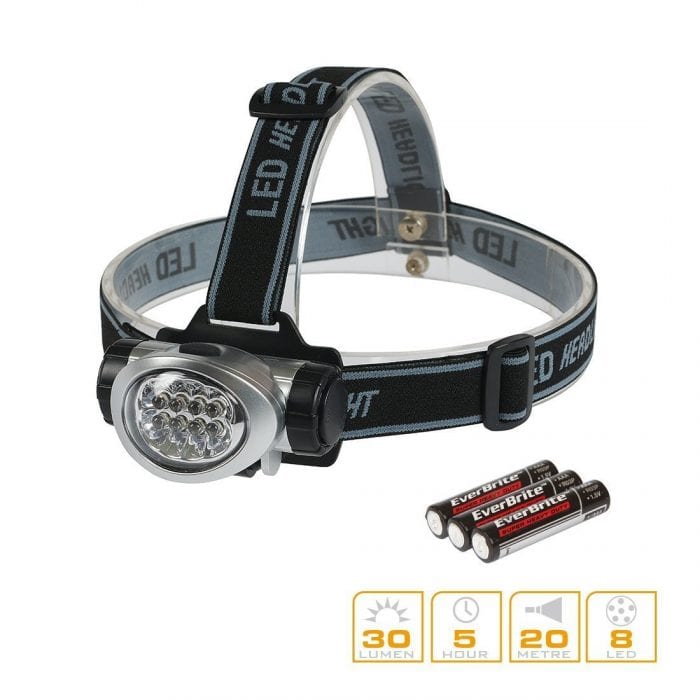
If you’re heading out for a hunting or hiking trip, consider a headlamp or lighted hat you can use hands-free. If you’re hunting, put a red or green filter over your light source, because white light will spook any game that crosses your path.

If you’re stranded, starting a fire and creating a portable torch is a good option. Fabric or plant fiber soaked in pine sap or pitch burns well and slowly, so you’ll be able to explore your surroundings without worrying about your light source burning out. We do recommend making multiple torches, just in case.
10) Cook Over a Fire
If you manage to catch a rabbit in a snare or a fish in a local waterway, you still have to cook it so it’s safe to eat. Contrary to what movies about survival might tell you, spearing it on a stick and suspending it above the fire isn’t the best way to cook anything over a campfire. If you don’t have a grill or even a cast-iron pan to your name, you can still cook.
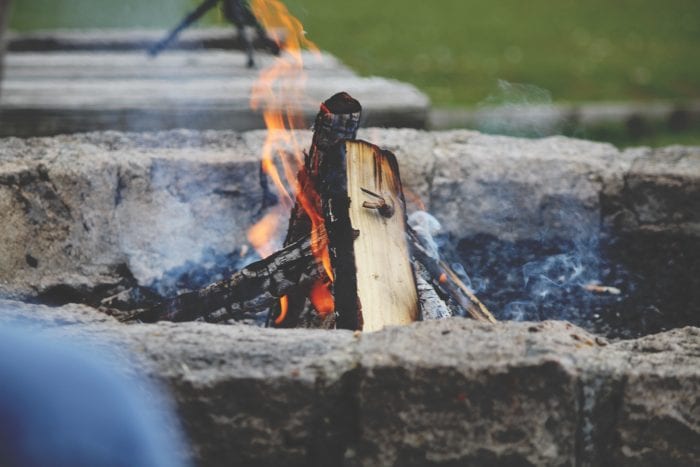
Don’t cook your food over an open flame. This might work well for making s’mores, but if you’re trying to cook a meal, you’ll end up eating charcoal. Start your fire and wait until it’s burned down to coals before you start trying to cook.
There is still plenty of heat to prepare your food thoroughly, but you won’t have to worry about scorching it with the flames.
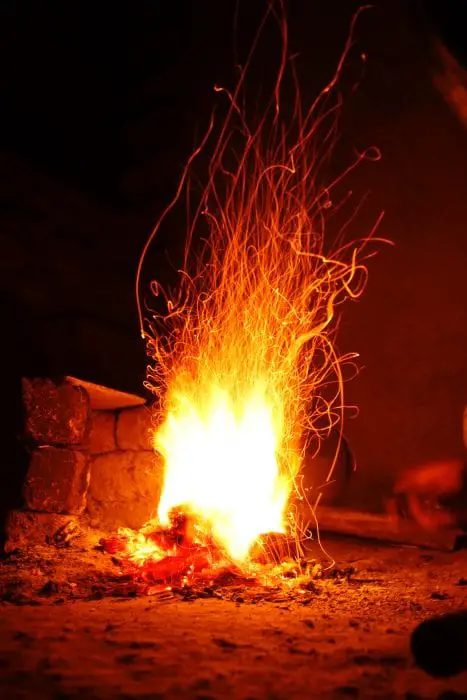
Take some time to look around for large, flat rocks. Avoid limestone, which can explode when it’s exposed to heat. Flat river rocks or shale are ideal for this.
Once your fire has burned down to coals, you can put these rocks onto them. The stones will absorb the heat and make an even cooking surface for you to work with.
You also have the option of wrapping your food in large leaves — banana leaves are traditional for this style of cooking, but most nonpoisonous varieties will work. Then you can put your food directly into the coals.
The leaves help keep it moist while it cooks without letting it burn. Who says you have to eat charred meat right off the bone just because you’re stranded in the middle of the woods?
11) Deal With Your Waste
There’s an old joke about whether or not a bear s**** in the woods, but if you’re out in the wilderness, you will eventually have to answer the call of nature. It’s important to know how to deal with your waste so you’re not creating a dangerous environment for yourself. Don’t drop your pants just anywhere to take care of business.
If you’re going to stay at the same campsite for a while, consider digging a latrine. Make sure you keep it at least 200 yards away from any nearby water sources to prevent your waste from contaminating your drinking water. Cover it with soil after you go, and fill the latrine back in once you’re ready to head home.
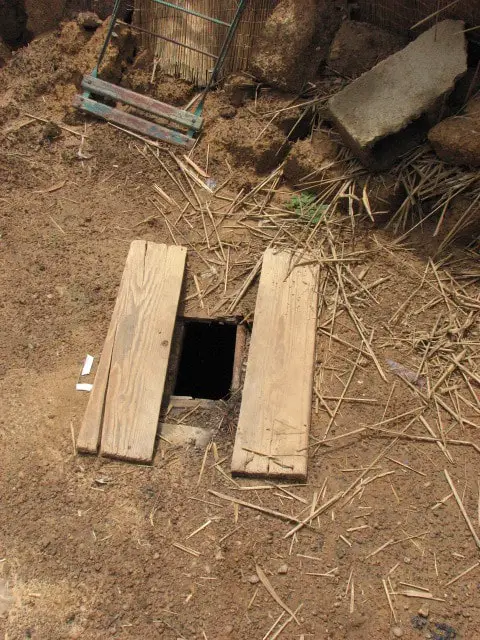
If you’re moving through the woods or trying to find your way home, digging a latrine isn’t exactly feasible every time you need to go to the bathroom.
You’ll still want to bury your poop at least 200 yards away from any water supply, and at least 6 inches deep. If you’ve got plain unscented toilet paper, you can bury it as well. Anything else, such as baby wipes, need to be taken with you.
12) First Aid
We’ve already talked briefly about finding natural medicine, but all the supplies in the world won’t do you any good if you lack basic first-aid knowledge.
You should know how to bind wounds, how to set or splint bones, how to wrap sprains, how to treat burns, how to stop bleeding, and how to manage concussions, hypo, and hyperthermia.
These are all injuries you might encounter in a survival situation, and knowing how to treat them could mean the difference between life and death.

You don’t have to have a first-aid kit to treat many of these conditions. You can bind a wound with a scrap of cloth from your shirt or jacket.
Strips of fabric and a couple of sticks will serve as a makeshift splint. You have to learn how to be creative. You won’t be making bone needles like ancient women to stitch yourself up, but if you have a suture kit handy, it’s helpful to know how to properly close a wound.
We don’t recommend suturing any wounds you receive in the woods, however. Your stitching might be great, but if you don’t have access to proper antiseptics, you could be closing bacteria into the wound that will lead to an infection. That will make it harder to survive in the wilderness.
Conclusion
Knowing these skills is a great way to increase your chances of survival when things go wrong, but to effectively apply them you need to practice them. Survival is a process of continual learning, practice, and refinement.
Practicing survival skills can save your life, and also bring you closer to nature, those you practice with and how all of our ancestors lived. So take these techniques, head out to the woods and learn the new ones and keep practicing the ones you already knew!
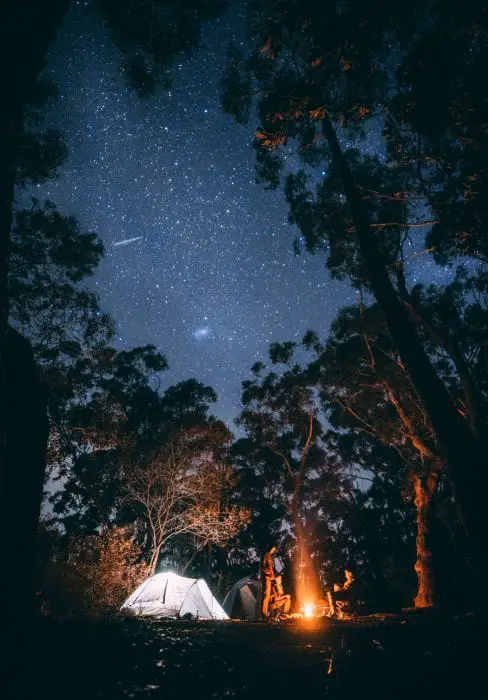
Not everyone can be a master of all skills, this is why it is important to have a group of trusted individuals with a wide range of skills.
If you get bored with those, (joke), here are 19 more ideas to keep you busy since we all have so much time these days (again, joke).

